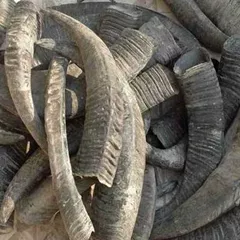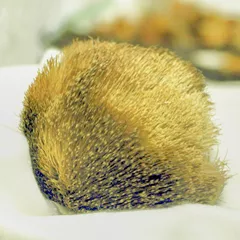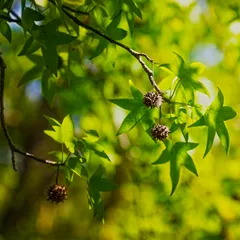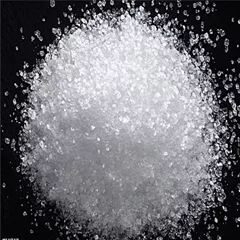Qi Li San
Qi Li San
Chinese: 七厘散
Pinyin: Qī Lí Sǎn
Other names: Seven-Thousandths of a Tael Powder








Qi Li San
Qi Li San
Chinese: 七厘散
Pinyin: Qī Lí Sǎn
Other names: Seven-Thousandths of a Tael Powder
Number of ingredients: 8 herbs
Formula category: Formulas that invigorate Blood and dispel Blood Stagnation
- Invigorates the blood and removes Blood Stagnation
- Invigorates Qi
- Reduces swelling and pain
- Stops bleeding
Contraindications: Not suitable during pregnancy as the formula consumes the Qi and induces... Not suitable during pregnancy as the formula consumes the Qi and induces abortion. It contains herbs that both move and expel. see more
Source date: 1762 AD
Source book: Collection for the Common Pursuit of Longevity
The information provided here is not a replacement for a doctor. You shouldn't use it for the purpose of self-diagnosing or self-medicating but rather so you can have a more informed discussion with a professional TCM practitioner.
Qi Li San is a 8-ingredient Chinese Medicine formula.
Invented in 1762 AD, it belongs to the category of formulas that invigorate Blood and dispel Blood Stagnation. Its main actions are: 1) invigorates the blood and removes Blood Stagnation and 2) invigorates Qi .
On this page, after a detailed description of each of the eight ingredients in Qi Li San, we review the patterns and conditions that Qi Li San helps treat.
The eight ingredients in Qi Li San

Xue Jie is a deputy ingredient in Qi Li San. This means it helps the king ingredient(s) treat the main pattern or it serves to treat a coexisting pattern.
1. Dragon's Blood (Xue Jie)
Part used: Prepared resin of the fruits of the tree and stems
Nature: Neutral
Category: Herbs that invigorate the Blood
Xue Jie dispels Blood Stagnation and alleviates pain. Its astringent quality also enables it to stop bleeding.

Hong Hua is a deputy ingredient in Qi Li San. This means it helps the king ingredient(s) treat the main pattern or it serves to treat a coexisting pattern.
2. Safflowers (Hong Hua)
In general Hong Hua's main actions are as follows: "Moves Stagnant Blood and regulates menses. Relieves pain caused by Blood Stasis."
In the context of Qi Li San, it is used because it invigorating the Blood and dispelling Blood Stagnation.

Mo Yao is a deputy ingredient in Qi Li San. This means it helps the king ingredient(s) treat the main pattern or it serves to treat a coexisting pattern.
3. Myrrh (Mo Yao)
Part used: Dried resin of the tree
Nature: Neutral
Taste(s): Bitter
Meridian affinity: SpleenHeartLiver
Category: Herbs that invigorate the Blood
In general Mo Yao's main actions are as follows: "Moves Blood and relieves Stagnation and pain caused by Blood Stagnation. Assists in wound healing."
In the context of Qi Li San, it is used because it dispel Blood Stagnation, promote Qi movement, reduce swelling, and alleviate pain.

Ru Xiang is an assistant ingredient in Qi Li San. This means that it either serves to reinforces the effect of other ingredients or it moderates their toxicity.
4. Frankincense (Ru Xiang)
Part used: An aromatic resin obtained from boswellia trees
Nature: Warm
Meridian affinity: SpleenHeartLiver
Category: Herbs that invigorate the Blood
In general Ru Xiang's main actions are as follows: "Moves Blood and Qi and relieves pain. Disperses Wind-Damp from the Meridians and relaxes the sinews. Reduces swelling and aids in wound healing."
In the context of Qi Li San, it is used because it dispel Blood Stagnation, promote Qi movement, reduce swelling, and alleviate pain.

She Xiang is an assistant ingredient in Qi Li San. This means that it either serves to reinforces the effect of other ingredients or it moderates their toxicity.
5. Musk (She Xiang)
Part used: Musk gland of the deer
Nature: Warm
Taste(s): Pungent
Meridian affinity: SpleenHeartLiver
Category: Herbs that open the Orifices
She Xiang is acrid and aromatic. It eliminates blockage from the Channels, assisting the herbs that invigorate the Blood and dispel Blood Stagnation.

Bing Pian is an assistant ingredient in Qi Li San. This means that it either serves to reinforces the effect of other ingredients or it moderates their toxicity.
6. Borneol (Bing Pian)
Part used: Organic compound obtained from plant extracts
Nature: Cool
Taste(s): Bitter
Meridian affinity: SpleenHeartLung
Category: Herbs that open the Orifices
Bing Pian is acrid and aromatic. It eliminates blockage from the Channels, assisting the herbs that invigorate the Blood and dispel Blood Stagnation.

Er Cha is an assistant ingredient in Qi Li San. This means that it either serves to reinforces the effect of other ingredients or it moderates their toxicity.
7. Catechu (Er Cha)
Er Cha is cool and astringent. It clears Heat and assists Dragon's blood in stopping the bleeding and generating new tissue.

Zhu Sha is an assistant ingredient in Qi Li San. This means that it either serves to reinforces the effect of other ingredients or it moderates their toxicity.
8. Cinnabar (Zhu Sha)
Part used: The mineral itself
Nature: Cool
Taste(s): Sweet
Meridian affinity: Heart
Category: Herbs that anchor and calm the Spirit
Zhu Sha relieve the fright and calm the Mind. It is because traumatic injury can be startling or frightening, it may cause disorder of the Qi and confusion or panic.
Qi Li San is used to treat Qi And Blood Stagnation

Qi is one of Chinese Medicine's vital subtances. Learn more about Qi in Chinese Medicine
Qi And Blood Stagnation
Pulse type(s): Choppy (Se), Deep (Chen), Fine (Xi)
Symptoms: Insomnia Dark face Moodiness Dizziness Chest pain Depression Amenorrhea Purple lips Mood swings Breast pain Hot flushes Purple nails Irritability Blotchy skin Restlessness Breast lumps Restlnessness Chest fullness Painful period Scanty periods Clots in blood Abdominal pain Abdominal masses Lochia retention Breast distention Dark colored blood Abdominal fullness Intense period pain High blood pressure Swelling of the feet Lower abdominal pain Dark menstrual blood Flooding and leaking Abdominal distension Pre-menstrual tension Black and tarry stools Irregular menstruation Boring fixed stabbing pain Pre-menstrual irritability Dark clots in menstrual blood Menstruation decreases gratually Feeling of fullness in the chest Abdominal distention and fullness Pain relief after clots discharge
Qi Li San is sometimes prescribed by TCM practitioners to treat Qi And Blood Stagnation. This pattern leads to symptoms such as chest fullness, chest pain, boring fixed stabbing pain and dark face. Patients with Qi And Blood Stagnation typically exhibit choppy (Se), deep (Chen) or fine (Xi) pulses.
The typical symptoms of Qi stagnation are distension, oppression and swelling. There are also emotional issues like mood swing, depression or irritability. However, the Blood Stagnation is more on pains and purple color manifestation on skin, face, lips and nails.
Qi Stagnation can cause the... read more about Qi And Blood Stagnation
Formulas similar to Qi Li San
Zhen Ling Dan is 38% similar to Qi Li San
Zhi Bao Dan is 33% similar to Qi Li San
Su He Xiang Wan is 27% similar to Qi Li San
Gua Lou San is 25% similar to Qi Li San
Xiao Huo Luo Dan is 25% similar to Qi Li San
Bing Peng San is 25% similar to Qi Li San
















